Social Media : The Hidden Impact on Our Health
Source : Nutriactis/Rouen-Normandie hospital
Scroll after scroll, social media shapes the way we see ourselves. Among young people, this influence is even stronger: 8 out of 10 girls report that social media negatively affects their perception of their physical appearance. Just one hour of daily exposure may be enough to trigger distress, especially by encouraging comparisons with often unrealistic standards. Gradually, a silent pressure sets in, undermining self-esteem. So, how can we use social media more mindfully?
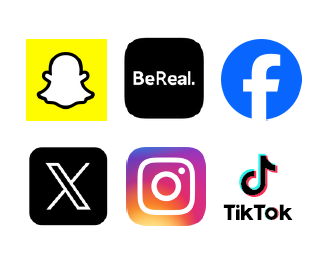
TikTok, Instagram, Facebook… These platforms, built around sharing photos and videos, are designed to capture attention and increase user engagement. The addictive nature of social media strengthens its impact on self-esteem, body image, and therefore on behavior. Billions of pieces of content are uploaded daily, many of them related to food, physical appearance, or lifestyle. They create implicit norms (body image, lifestyle habits…) aligned with today’s beauty standards.

An Emerging Addiction
For some users, social media can become problematic. When the need to connect becomes uncontrollable and the time spent online interferes with social life, studies, or leisure, it is called behavioral addiction. This compulsive use often causes distress or suffering, with real impact on daily life. Unfortunately, users are not always aware of the consequences of their usage on their health. As with other addictions, tolerance develops: the more you scroll, the more you feel the need to stay connected.
The Algorithm: the Driving Force of This addiction
Social media algorithms are designed to analyze the content viewed and suggest similar content. This traps users in a bubble of personalized recommendations, increasing the risk of addiction. Users therefore spend even more time on these platforms, leading to repeated exposure to potentially harmful messages and a risk of normalizing dangerous behaviors (extreme diets, body checks*, social isolation…). Users may then seek comfort in these beliefs by further increasing their online interactions.
*Body checks: targeted, repeated checks of certain body areas to evaluate appearance
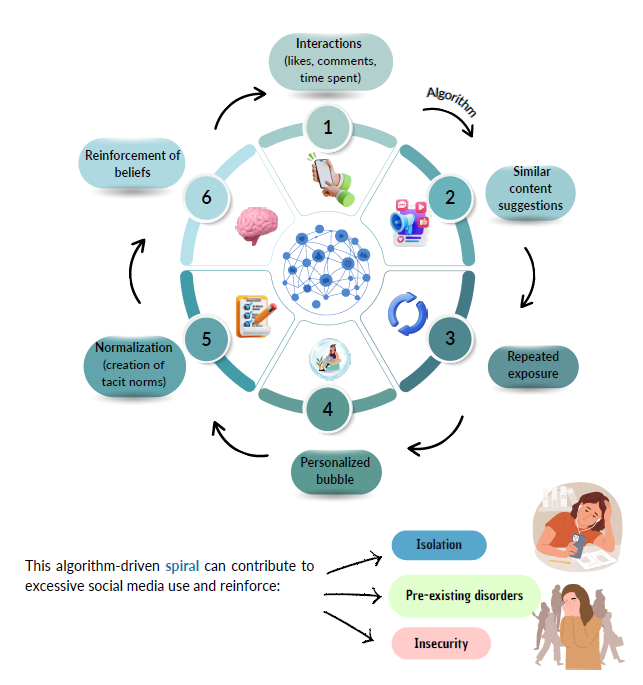
Mental and Physical Consequences
Excessive social media use can have numerous psychological, emotional, and physical consequences. It can generate negative feelings and foster upward social comparison. This comparison can heighten feelings of inferiority, lowering self-esteem. It also promotes thinness ideals and body dissatisfaction.
In the long run, these effects can easily lead to mental exhaustion and anxiety.
*Tendency to compare oneself to people perceived as superior.
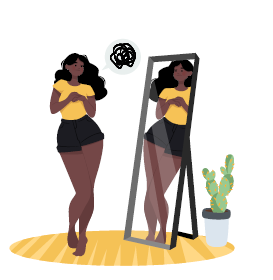
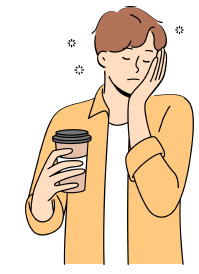
Screen time can also have many repercussions such as lack of sleep, sedentary lifestyle, back pain, decreased productivity. All of which contribute to physical and mental exhaustion.
These factors fuel anxiety, which can evolve into depression.

Risky Challenges: Dangers behind the Screen
What?
Some trends, such as “pro-ana” content (promoting extreme thinness as a lifestyle), “fitspiration” (glorifying an extreme pursuit of thinness and physical performance), or the hashtag #SkinnyTok, spread particularly harmful messages.
How?
Behind pseudo-motivational messages or the promotion of an extreme lifestyle (sometimes staged), hide encouragements to food restriction, sometimes even glorifying hunger and pain. These posts highlight extremely low-calorie diets, the elimination of entire food groups, body checks*, excessive exercise routines, or guilt-inducing phrases. Conversely, some content encourages excessive eating.
*Body checks: repeated targeted checks of body parts to assess appearance
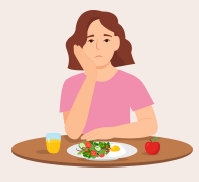
These trends increase the risk of body dissatisfaction, disordered eating practices, and therefore eating disorders or obesity.
Influencers, through their communities, also create a strong sense of belonging and dependence, which can serve as a refuge, reinforcing social isolation another risk factor for EDs.
Examples of thinness challenges: a danger to health
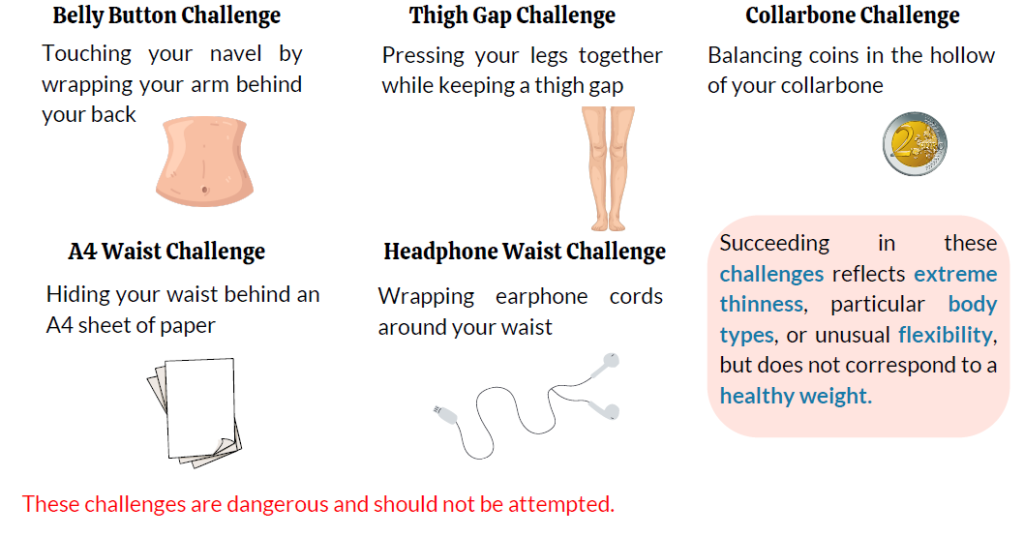
Real Moderation?
Platforms struggle to stop the spread of these harmful trends. TikTok has officially removed the hashtag #SkinnyTok, but unfortunately, alternatives constantly appear and escape moderation. It is therefore crucial to implement sustainable solutions to counter these movements, which exploit both moderation loopholes and algorithmic power.
Taking Action and Protecting Ourselves
While social media can spread harmful messages, it can also be spaces of inspiration and kindness.

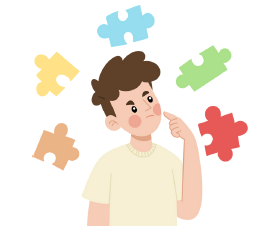
Some accounts share uplifting quotes or delicious balanced recipes.
It is therefore essential to learn to use these tools with a critical eye and a mindful approach, in order to benefit from their positive aspects without falling into their traps.
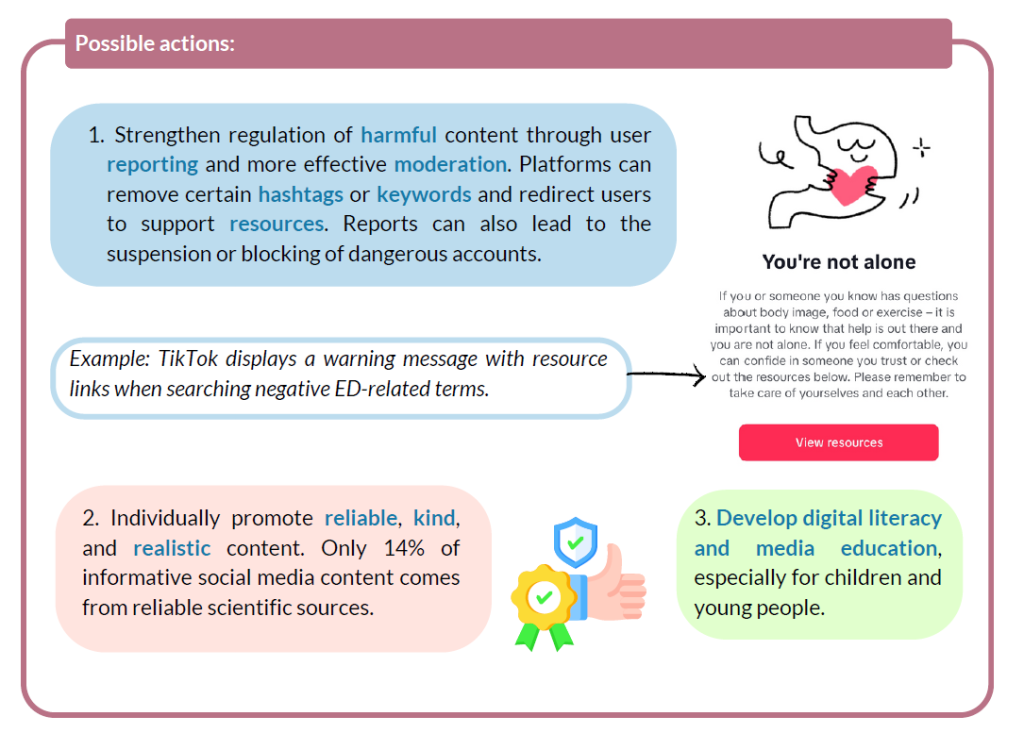
With this in mind, here are two types of social media content that promote both awareness and the reduction of guilt. First, Body Neutrality, where the content does not focus on the body’s appearance but rather on its functions a more neutral alternative to Body Positivity. There is also ED recovery content, which raises awareness about eating disorders and mainly features personal testimonies.
 Social media does not replace healthcare professionals. The content found there should always be approached with caution and critical thinking.
Social media does not replace healthcare professionals. The content found there should always be approached with caution and critical thinking.
Conclusion
In the end, social media is neither inherently good nor bad. Its impact depends on how it is used, the type of content consumed, and the mindset with which we engage with it. Learning to use it with perspective and kindness is a way to protect ourselves.
«Beauty begins the moment you decide to be yourself. » – Coco Chanel (translated from French)
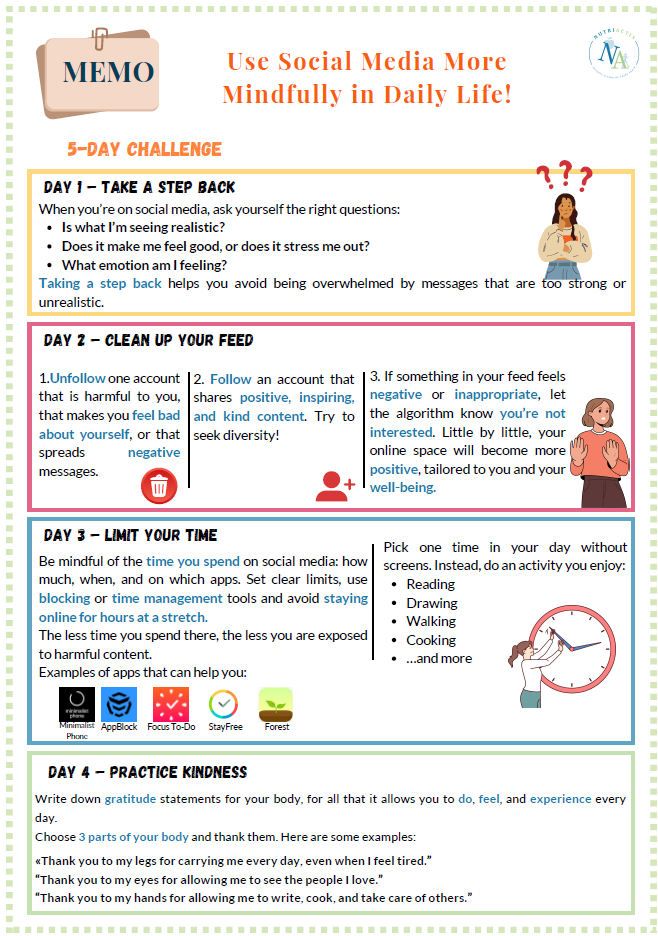
-
Social Media : The Hidden Impact on Our Health
pdf – 9 MB